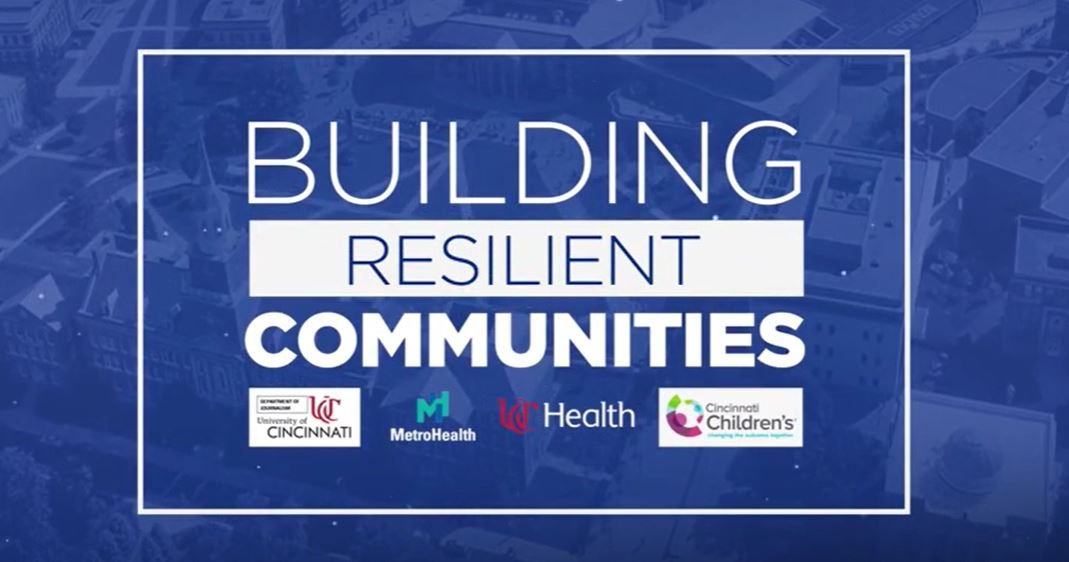OHIO — Adverse childhood experiences (ACEs) are traumatic events that can affect children through their adult years, potentially causing them physical, mental and social problems.
In this Spectrum News special, the team explores the research behind ACEs in four parts and what's being done to help children through those traumatic events in order to build resilient communities.
Watch part 1 below:
Ohio's major urban areas like Cleveland, Columbus and Cincinnati have communities where people are just trying to get by, and getting by these days is made more difficult by the lingering effects of trauma. Trauma comes in many forms, but researchers have identified a list of ACES that are especially critical.
These ACEs are negative events that if two severe raise a child's stress levels, this increased stress can have lasting effects on physical, social and emotional development. Examples of ACEs range from a parent's divorce to parental incarceration, emotional neglect or physical abuse.
Data analysis shows ACEs have long-term health effects, too. University of Cincinnati journalism and policy researchers examined data from the 2019 behavioral risk factor surveillance survey. The study asked thousands of Ohioans about their medical status and prior experience with trauma like ACEs. The researchers found that three traumatic events in particular showed increased reports of fair or poor health among Ohio adults: A parent spent time in prison, a parent struggled with mental illness or a parent struggled with drinking.
MetroHealth child psychologist Dr. Lisa Ramirez said the key to building trauma resilience is meaningful relationships.
"The research shows that those meaningful relationships that are supportive in nurturing and responsive are the No. 1 protective factor," she said.
Watch part 2 below:
When it comes to approaching children about traumatic experiences and helping them through it, Tonjarene Bronston, the principal of the Dampe Community School in Cincinnati, said many times a child shows they've experienced something traumatic through behavior.
"With children, what you have to know is that an issue could come up, but they won't directly say what the issue is. It comes out through behavior," Bronston said. "So you have to understand with the relationship that you form with the child and the family, how to best deal with it. We offer a plethora of services within our building, for our children. We make it a choice for the parents."
Bronston said in order to help the children, the family needs to be helped as a whole.
"We have to let the family know they have a system, a network of people that support them," Bronston said. "You have to come with no judgment. You have to be reflective in your own life and you have to definitely be sensitive to their needs."
Policy also plays a role in ACEs.
Watch part 3 below:
"In the line of work that we've been doing in the city of Cincinnati for the past 20 years, dealing with its public safety apparatus, meaning policing, helping them to understand just exactly what communities are going through more specific communities of color," said Iris Rowley, the program manager of the Cincinnati Black United Front. "Those were the individuals who were on the other side of the stick when it came to very negative, very desperate, very, traumatizing policing in our city."
Specialists also joined Spectrum News to give advice on what individuals can do in their own lives to identify ACEs and work their way through it.
Watch part 4 below:
One thing that Dr. Anita Shah of the Department of Pediatrics at UC Health said people need to understand is that a majority of individuals are resilient.
"So when we see the effects of ACEs or adverse childhood experiences, we have to take a step back and realize and recognize these responses, but then understand what is going on in the environment that is triggering that," Shah said. "So I think what's the way to frame this is, is when we're in dealing with that individual, not asking what's wrong with them, but really taking a step back and asking what happened to them. And once we understand the environmental influences, we can start to tackle and build resilience in these individuals by promoting safe, stable, nurturing relationships, or having a supportive adult role model in their lives."
Another major part of facing ACEs is feeling safe.
"The opposite of trauma is not resilience. It's actually safety in order for any person of any age to get to healing and resilience," said Katherine Kurtz of the Center for Health Resilience at MetroHealth Cleveland. "They need to be able to access safety within themselves through safe relationships and safe environments. And it's important to know that what may feel safe for me may not feel safe for you. It's going to be individualized at the center for health resilience. We believe that trauma may be an individual experience, but it's a community responsibility."



